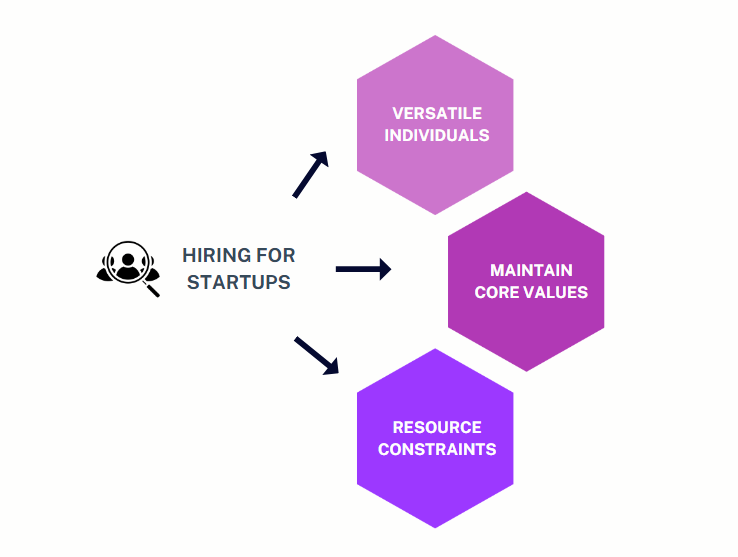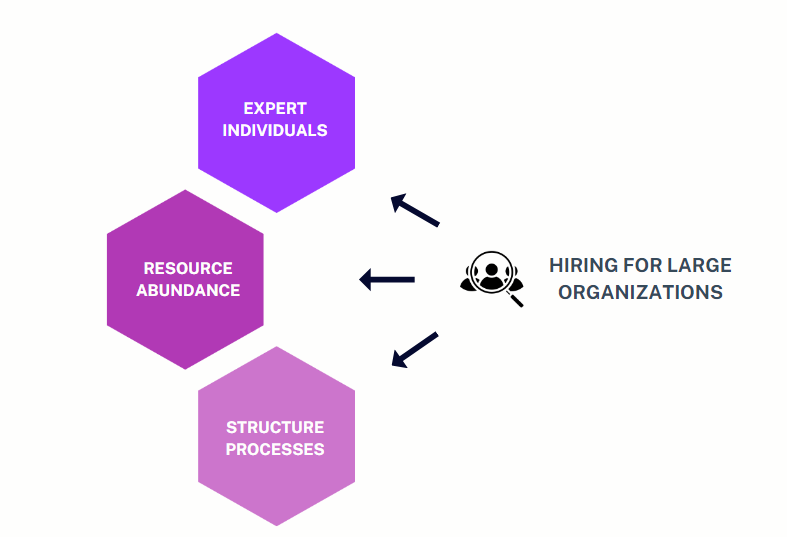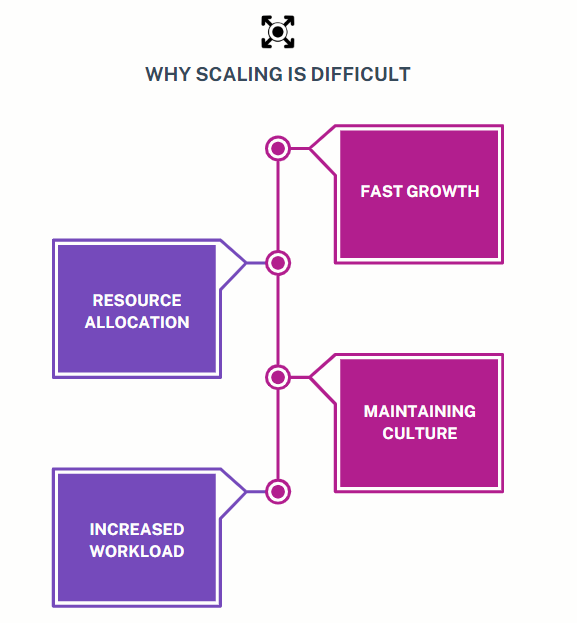In a startup, the product team often starts as a small, agile group of innovators. One person can wear multiple hats in startups. In contrast, large enterprises rely on specialized, well-structured teams to drive sustained growth.

Today we’ll explore the contrasting strategies for hiring, managing, and scaling product teams in these two distinct environments and offer insights on how to navigate the unique challenges and opportunities each presents.
It all starts with hiring. Whenever you have a product idea, you need to hire people to build it. For startups, the need might be limited to one or two distinct roles. But for large enterprises, hiring is a regular part of the process.
In startups, hiring the right people is crucial. This is due to the limited size, fast-paced nature, and limited resources of the environment. Potential employees need to be versatile and adaptable. They should be able to handle various tasks as the company grows.

Important hiring considerations for startups include:
Startups often look for individuals who are not only skilled but easy to work with. The hiring process is usually less formal. The interview and assessment focus more on potential and cultural alignment than extensive experience.
Large enterprises have the advantage of established reputations and extensive resources that enable them to attract top talent. They focus on hiring specialists who can excel in specific areas. The overall goal of hiring is to contribute to the organization’s broader long-term goals.

Important hiring considerations for large enterprises include:
While startups need versatile individuals, large enterprises hire specialized talent. Understanding these differences is key to successful team building for product managers. After hiring a team full of different skill sets and personalities, management comes next.
As a product manager, you play an instrumental role in managing team morale, skill set, and expectations. For startups and large companies, the responsibilities are entirely different.
Managing product teams in startups is a challenging learning curve for product managers. It involves a more fluid and adaptable approach. The structure and workflow are typically flat. Your decision-making and time-management skills will be needed at every turn. Startups are chaotic and fostering a collaborative environment is essential for productive turnovers.
Here are some things to consider:
Product team management in larger companies is more structured and formalized. There are multiple layers of management in most of the teams throughout the organizations. The team members have clearly defined roles and responsibilities. This helps with maintaining order and efficiency.
Startups have the benefit of small size and that leads to flat hierarchies and hands-on leadership. On the contrary, large enterprises rely on a structured approach in everything. For product managers, an understanding of these management styles is crucial for leading product teams in a variety of setups.
At a certain point in the life of a product, there will be a need to scale up the teams to match the demands of the customer base or to develop the product rapidly. Let’s learn about the factors at play here.
With consistent product growth, the productive output of a company can only be sustained by scaling it the right way. Startups and large organizations need to scale efficiently in their own manner:

Scaling product teams in can be challenging due to:
To scale product teams in startups, the focus should be on hiring versatile individuals. They will be able to adapt quickly to changing roles.
It is also crucial to hire for the most essential roles first. If you have to make a choice between a software developer and a project manager, the developer should be prioritized. You also need to set efficient processes to manage the increased workload.
For large-scale companies, the key aspect is long-term planning and implementing sustained growth strategies. When budget is not a constraint, it is wise to integrate new team members smoothly into existing structures. As a product manager, you need to maintain clear communication with the hired resources and set expectations right from the start.
Startups face rapid scaling challenges and must maintain their culture. Large enterprises benefit from long-term planning and smooth integration. As a product manager, you might get to experience both scenarios.
For startups, you recognize the need to scale the team easily. When workloads become unmanageable and key tasks start falling through the cracks, it is a clear indication that you should plan to scale the current team.
Feedback from management and employees matters a lot for both organization types. If it indicates bottlenecks, inefficiencies, or the inability to meet market demands, the need for urgent scaling is evident.
As a product manager, you need to understand the distinct strategies for building and scaling product teams. When you are able to recognize these differences, it will help you to tailor your management and hiring approaches for different scenarios.
The following key pointers will prove useful for your day-to-day reference.
For startups:
For large enterprises:
These insights will help you to build and scale product teams effectively, no matter the size of your organization. When a product team is scaled correctly, it is well-equipped to meet unique challenges and opportunities in an ever-changing product landscape. Ultimately, it makes you a more well-rounded product manager ready to contribute in varied circumstances.
Featured image source: IconScout

LogRocket identifies friction points in the user experience so you can make informed decisions about product and design changes that must happen to hit your goals.
With LogRocket, you can understand the scope of the issues affecting your product and prioritize the changes that need to be made. LogRocket simplifies workflows by allowing Engineering, Product, UX, and Design teams to work from the same data as you, eliminating any confusion about what needs to be done.
Get your teams on the same page — try LogRocket today.

A practical five minute revenue estimation method to help product managers compare ideas, drop low impact features, and prioritize smarter.

A practical guide for PMs who want to stop being bottlenecks, delegate smarter, and lead teams effectively with a clear ownership framework.

Stop letting unreliable data block features. Treat data as inventory to track quality, ownership, and ship with confidence.

Learn why slide decks slow teams down and explore better tools like whiteboards, PRDs, and prototypes to improve collaboration and alignment.